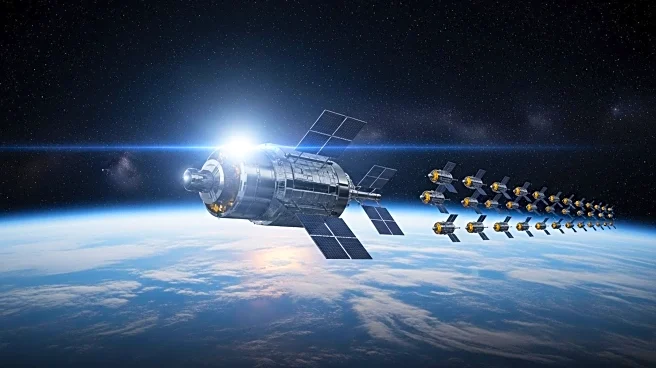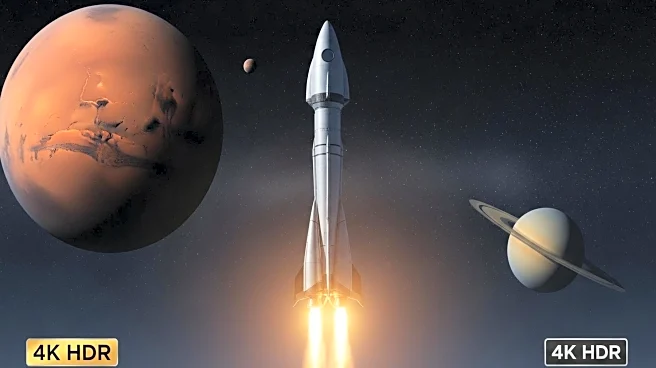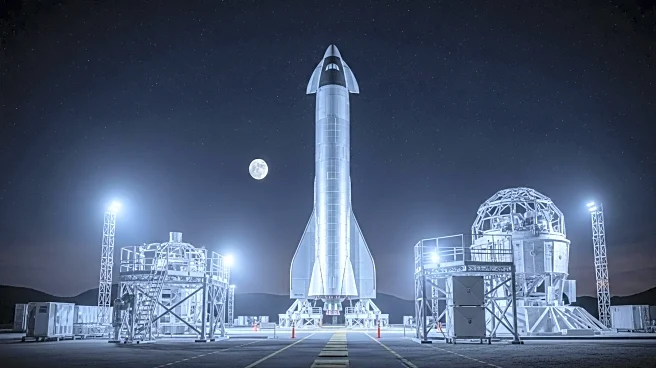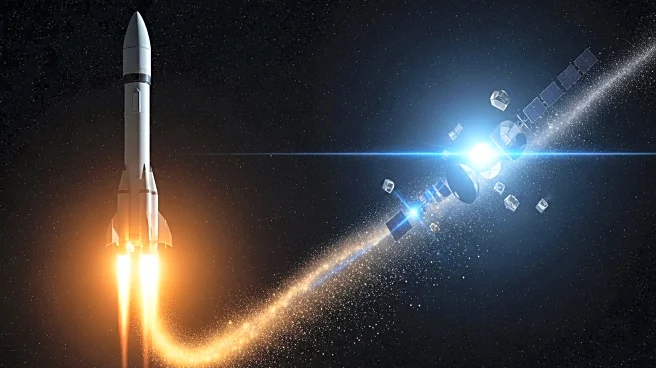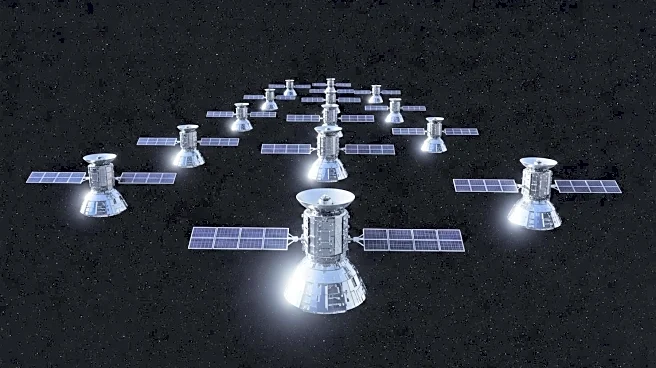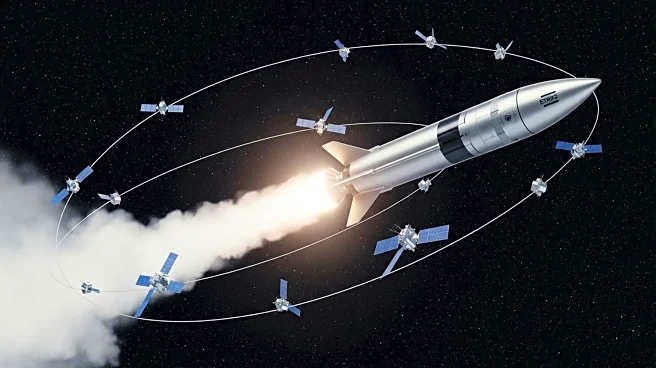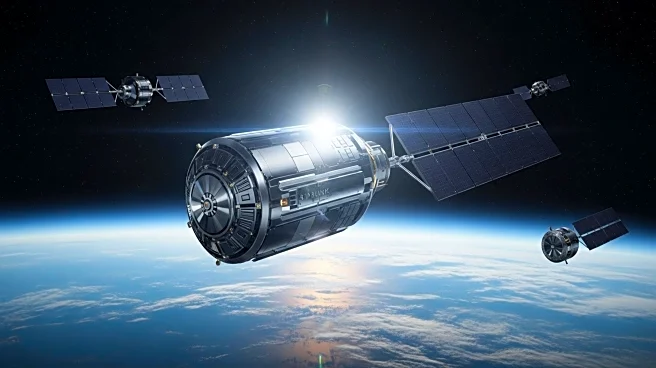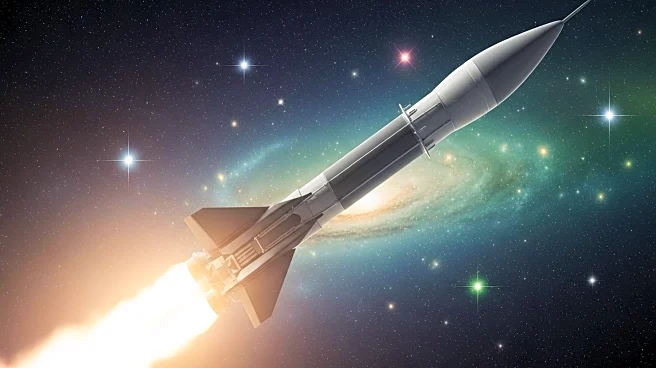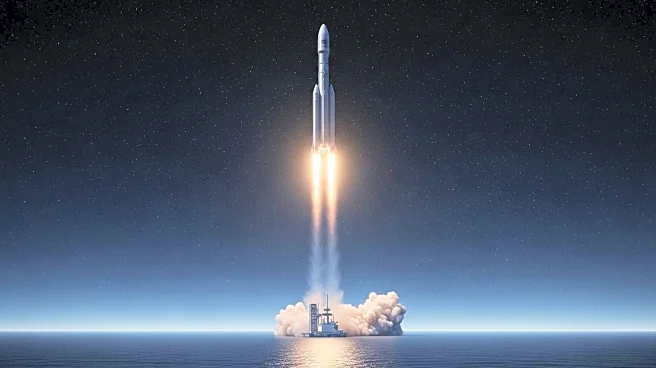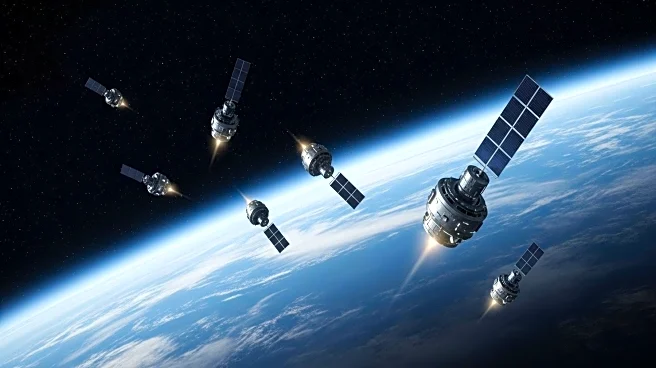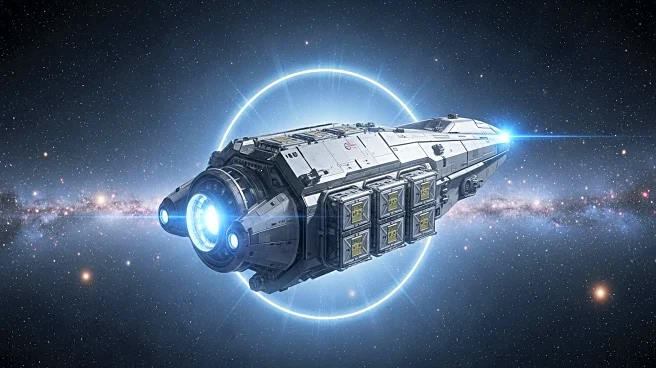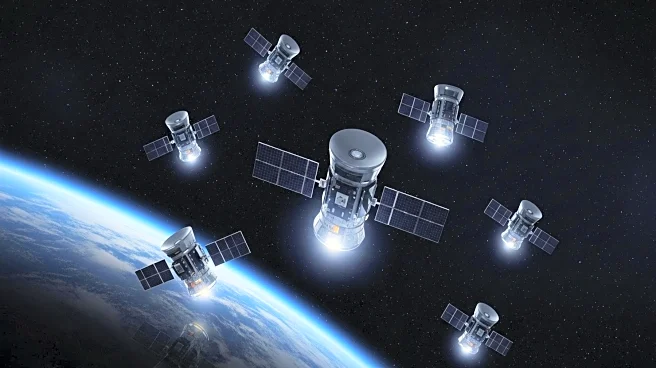What is the story about?
What's Happening?
SpaceX successfully launched a Falcon 9 rocket carrying 28 Starlink satellites from Vandenberg Space Force Base in California. The launch occurred at 11:54 p.m. EDT on October 7, 2025. The rocket's first stage returned to Earth, landing on the SpaceX drone ship 'Of Course I Still Love You' in the Pacific Ocean. This marks the 29th launch for this particular booster, designated B1071, which is one flight shy of SpaceX's reuse record. The upper stage of the Falcon 9 continued to carry the satellites to low Earth orbit, deploying them about 60 minutes after launch. This mission contributes to the growing Starlink network, which is the largest satellite constellation ever assembled, with over 8,500 operational satellites.
Why It's Important?
The successful deployment of additional Starlink satellites is significant for SpaceX's goal of expanding global internet coverage. The Starlink constellation aims to provide high-speed internet access to underserved and remote areas worldwide, potentially transforming connectivity for millions. The frequent reuse of Falcon 9 boosters demonstrates SpaceX's commitment to reducing launch costs and increasing efficiency, which could have broader implications for the commercial space industry. As SpaceX continues to innovate and push the boundaries of space technology, it sets a precedent for other companies and nations in the space sector.
What's Next?
SpaceX is expected to continue its aggressive launch schedule, further expanding the Starlink network. The company is likely to pursue additional contracts and partnerships to enhance its satellite internet services. As the Starlink constellation grows, regulatory and competitive challenges may arise, particularly concerning spectrum allocation and market competition. SpaceX's advancements in reusable rocket technology may also influence future space missions, including potential collaborations with NASA and other space agencies.
Beyond the Headlines
The expansion of the Starlink network raises questions about space debris and the long-term sustainability of satellite constellations. As more satellites are launched, the risk of collisions and the creation of space debris increases, necessitating improved tracking and management systems. Additionally, the widespread availability of satellite internet could impact traditional telecommunications providers, prompting shifts in industry dynamics and regulatory frameworks.
AI Generated Content
Do you find this article useful?
